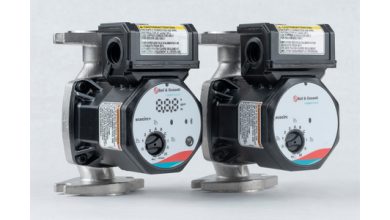Midea Showcases Heat Pump Innovation at 2024 ENERGY STAR Products Partner Meeting
Midea recently participated in the ENERGY STAR Products Partner Meeting in Minneapolis, Minnesota, a gathering organized by the Environmental Protection Agency that brought together leaders in energy efficiency from across the country. At the event, Midea displayed the Packaged Window Heat Pump and the EVOX G³ Heat Pump System — demonstrating its commitment to delivering heating and cooling technologies that earn the ENERGY STAR seal of approval.
Midea’s presence at ESPPM comes at a crucial time as the U.S. government pushes forward with initiatives aimed at reducing carbon emissions and increasing energy efficiency, including energy efficiency incentive programs within the Inflation Reduction Act, as well as the Department of Energy’s Cold Climate Heat Pump Technology Challenge, of which Midea is a manufacturing partner.
The event concluded in a panel discussion on new room heat pumps, where David Leezer, an engineering manager, showcased Midea’s Packaged Window Heat Pump and explained the company’s role in the Clean Heat for All Challenge. This initiative, in partnership with the New York City Housing Authority, the New York Power Authority and New York State Energy Research and Development Authority, aims to retrofit public housing units with energy-efficient heat pumps. The initiative is replacing outdated steam heating systems that are a leading carbon emissions source. Midea will be delivering 20,000 cold-climate PWHP units, supporting its goal of making high-performing heat pump technology of today more accessible for all.
Midea representatives engaged with State Energy Office (SEO) representatives to explore how their heat pump products can be integrated into incentive programs and energy policies. These discussions provided valuable insights into how these heat pumps can be scaled and adopted in every state.
After meeting with the SEOs, Midea sponsored a happy hour which provided a relaxed setting to cap the day.



